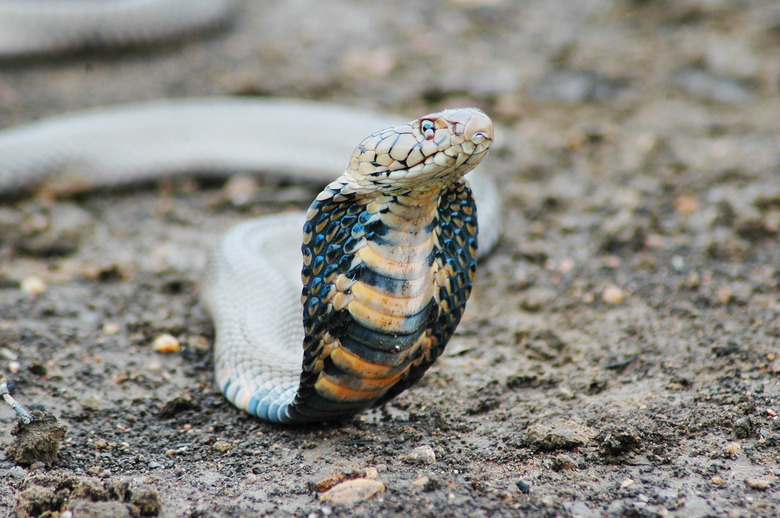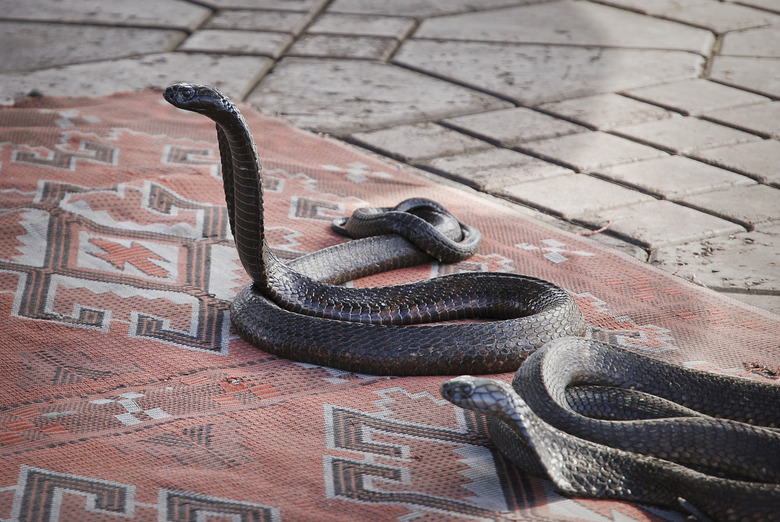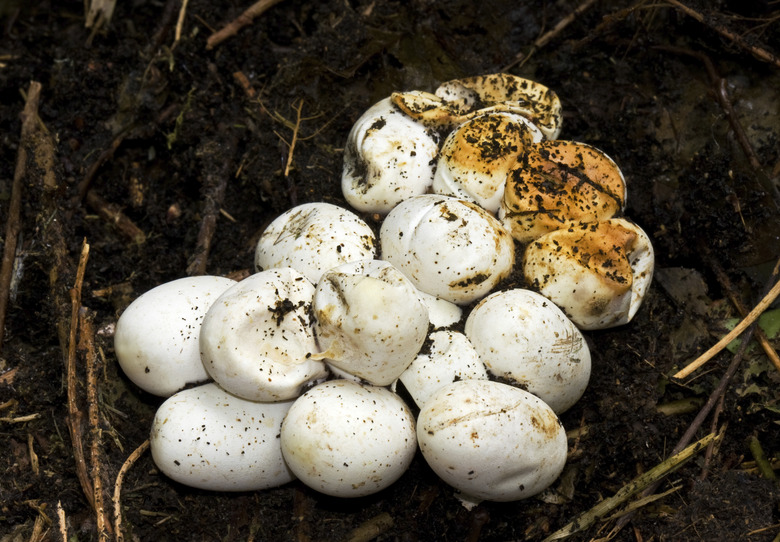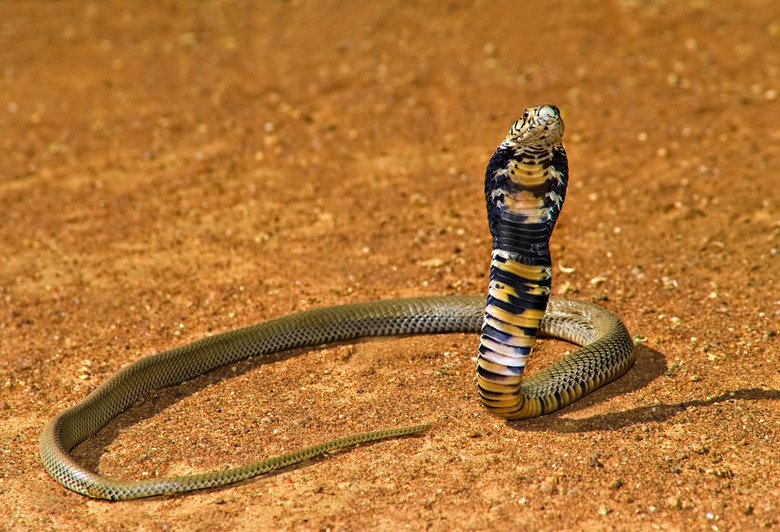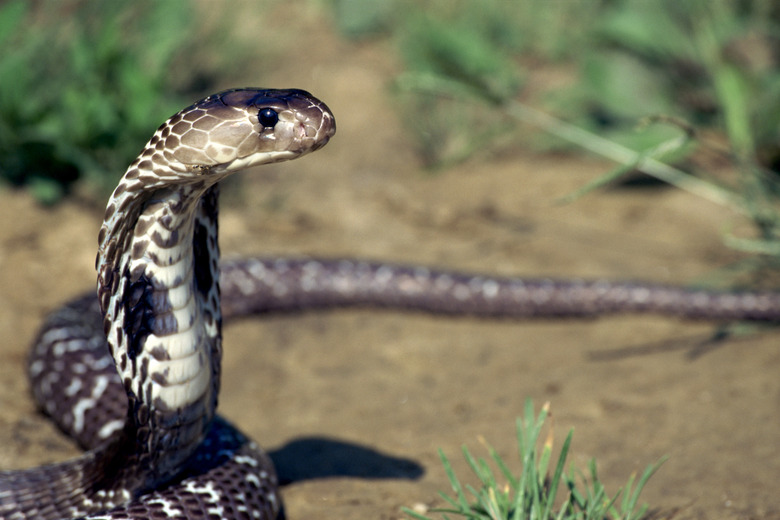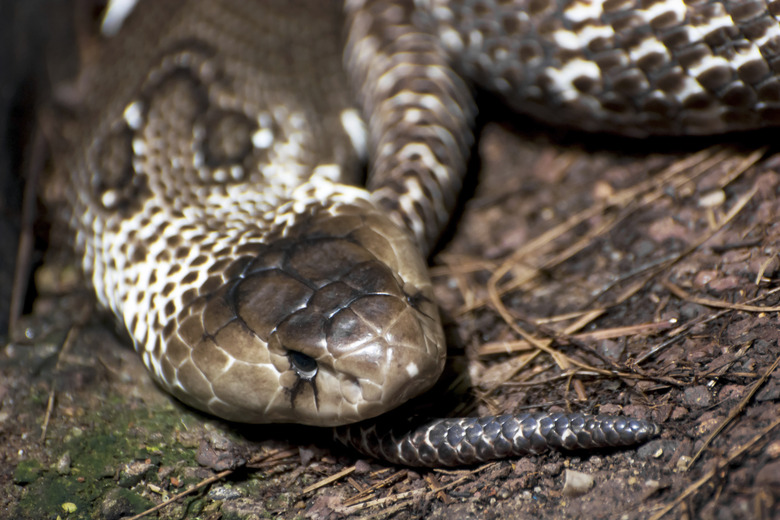What Is The Life Cycle Of The Cobra?
Cobras are a species of snake included in the Elapidae family, and like other venomous snakes in this family, are also known as Elapids. A cobra has a hood around its head that it "spreads" while hissing and rising into a threatening posture.
It has only two natural predators: mongoose and humans. Because cobras have short fangs, they sometimes strike their prey numerous times in an effort to release enough venom to kill quickly.
The King Cobra life cycle is similar to that of other snakes with a few specifics that are unique to this species.
King Cobra Life Cycle Begins: Mating
King Cobra Life Cycle Begins: Mating
Female cobras typically mate with several males, resulting in a longer-than-usual mating season. It begins when the mature female leaves trails of her pheromones to attract mature males. The males of most cobra species perform elaborate dances in order to win the female over from their competition; the largest male is often the victor.
Once mating begins, the male uses his head to rub the female's underside in order to stimulate her. He has two reproductive organs and uses them both to deposit sperm in the female's oviduct, which is the tube through which her eggs pass when she lays them.
Eggs
Eggs
Females lay one clutch of 12 to 60 eggs per year approximately 9 weeks after mating. The ovary releases the unfertilized eggs through the oviduct where the stored sperm fertilizes them before they exit. The King Cobra will make a nest of leaves for her clutch, which she'll then cover with leaves and lay on top of to incubate.
Some cobras lay their eggs in ground holes or under a natural cover, such as a rock. The females guard their clutch for almost the entire 45 to 80 day period of incubation, vibrating their bodies to generate heat. They leave the nest just before the King Cobra babies hatch.
King Cobra Babies: Hatchlings
King Cobra Babies: Hatchlings
Like nearly all baby snakes, King Cobra babies are called hatchlings because they hatch from eggs; the small percentage of snakes birthed live aren't known as hatchlings. Cobra hatchlings' initial size depends on their species, but the average hatchling is about 16 to 18 inches long.
A cobra egg has an unusually large yolk, part of which becomes a yolk sac in the hatchling's stomach and provides it with a two-week supply of nourishment in case it has trouble finding food immediately. According to the San Diego Zoo, a "hatchling is able to take care of itself from the start and can spread its hood and strike on the same day it hatches."
Maturity
Maturity
Cobras reach the peak of the King Cobra life cycle, aka maturity, between 4 and 6 years of age. The average male grows anywhere from 3 to 7 feet in length, but the large king cobra can grow as long as 18.5 feet. Depending on the species, a cobra might weigh as much as 20 pounds. They're venomous rather than poisonous, meaning a mongoose or human can eat them; only their fangs contain venom.
A mature cobra can administer enough venom in one bite to kill an elephant, but their prey mainly includes rabbits, mice, rats, birds, eggs and other snakes. Mature cobras have a slow metabolism, which means they can live for days or months without a meal.
King Cobra Lifespan
King Cobra Lifespan
Cobras are intelligent and tend to learn quickly, which partially accounts for their long lifespan. The King Cobra lifespan is up to 30 years. For cobras that don't succumb to illness or other life-ending dangers in the wild, the average lifespan is 20 years.
Cite This Article
MLA
Campbell, Meg. "What Is The Life Cycle Of The Cobra?" sciencing.com, https://www.sciencing.com/life-cycle-cobra-6622173/. 4 June 2019.
APA
Campbell, Meg. (2019, June 4). What Is The Life Cycle Of The Cobra?. sciencing.com. Retrieved from https://www.sciencing.com/life-cycle-cobra-6622173/
Chicago
Campbell, Meg. What Is The Life Cycle Of The Cobra? last modified March 24, 2022. https://www.sciencing.com/life-cycle-cobra-6622173/
